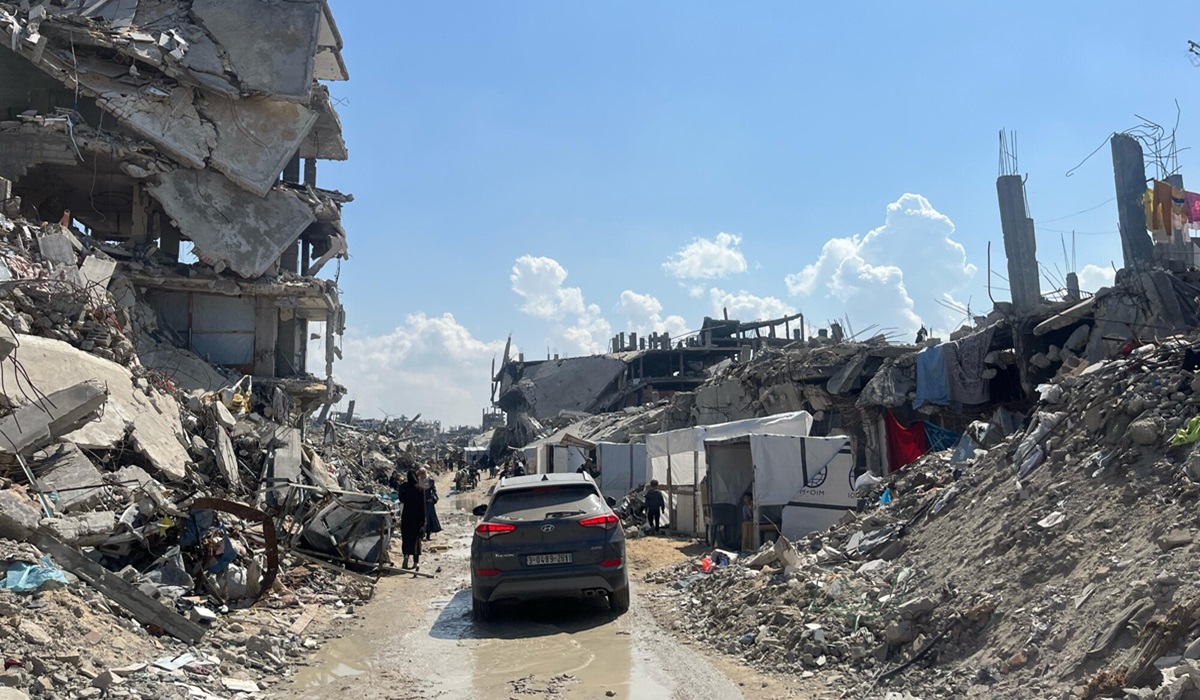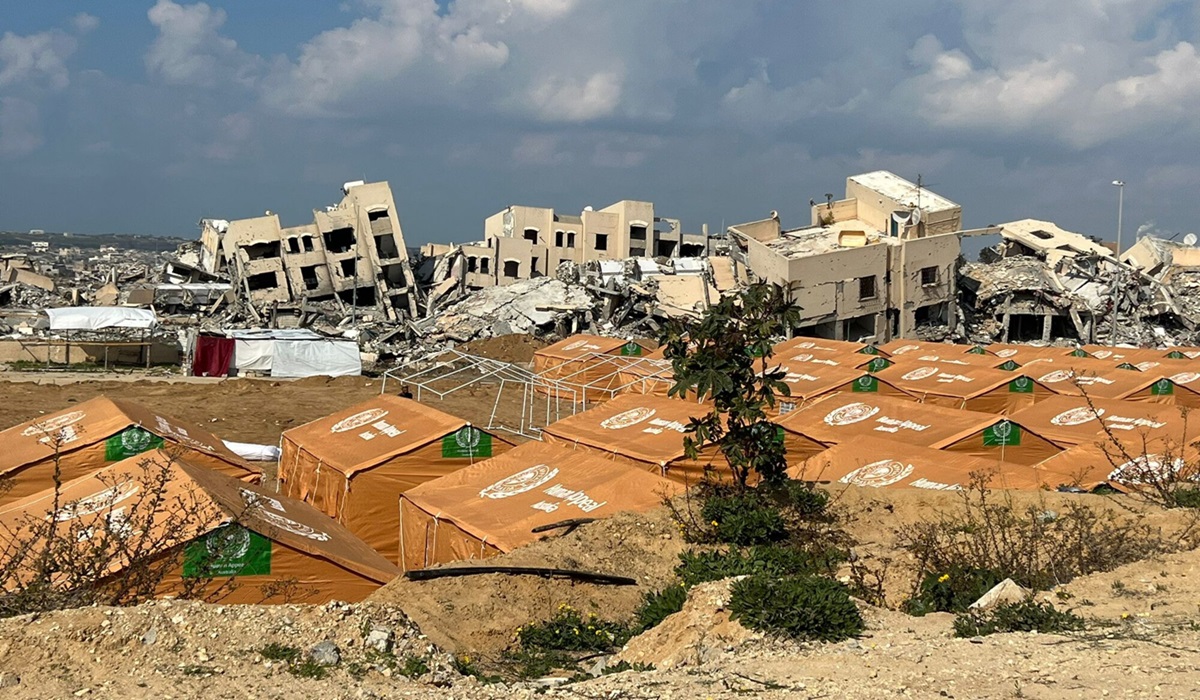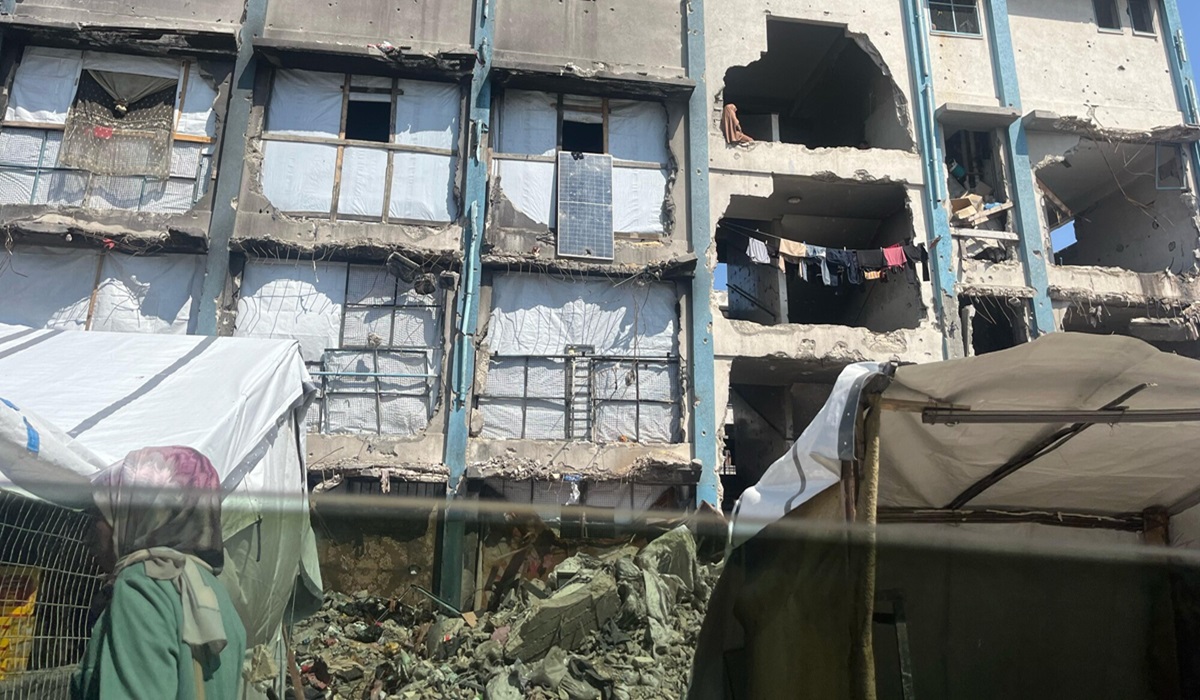Gaza: Three Months Since Ceasefire Collapse, the Shelter Response Faces Total Breakdown
- Ingrid Jones
- Middle East
- Trending News
- June 19, 2025

Image Credit, NRC
Three months after the collapse of the 18 March ceasefire between Israel and Hamas, Gaza’s shelter response is facing imminent collapse. Humanitarian workers are outmatched, shelter materials are blocked, and families—displaced again and again—are running out of places to go. This is no longer a temporary crisis. It’s a full-scale breakdown of basic survival systems in one of the most densely populated and devastated areas on Earth.
Since mid-March, over 680,000 Palestinians have been newly displaced, with more than 242,000 of them forced to flee in just the past five weeks, according to the Site Management Cluster. Israeli military designations have rendered more than 82% of Gaza either under displacement orders or as “no-go” zones, forcing families to flee multiple times, often on foot, with only what they can carry—if anything at all.
“This is an acute operational emergency,” said Jeroen Quanjer, National Coordinator of the Shelter Cluster in Palestine. “But the solution is political. Shelter actors are ready to scale up if access is granted and supplies are allowed in. Until then, families will remain exposed, sleeping in unsafe and unsanitary conditions, without protection from the heat or the threat of violence. We have aid ready to move—what’s needed now is immediate access.”

But that access remains tightly sealed off. No shelter materials—not a single tent, plank of timber, or tarpaulin—have entered Gaza since 1 March, before Israel imposed a full blockade on humanitarian aid. Eleven weeks of total shutdown have given way to a limited trickle of food and medicine, but the core supplies required to house people remain completely blocked.
And the consequences are dire. The last 100 tents distributed in North Gaza’s Jabalia in mid-April were a drop in the ocean. With an estimated 1.1 million people now requiring emergency shelter, humanitarian actors warn that stocks are nearly exhausted. Emergency shelter kits are being cannibalized and reconfigured from residual supplies. According to the Cluster, it takes just 35 pallets—or two trucks—to serve 100 families. But even this modest scale of assistance is currently impossible under the blockade.
In the meantime, Gaza’s displaced are making do with bombed-out schools, vacant rubble, and overrun public lots as makeshift shelters—spaces never intended for human habitation. These overcrowded areas lack basic water, sanitation, or power infrastructure. Fuel shortages have brought waste collection and sewage treatment to a halt. Shelters have become breeding grounds for disease, and the risk of gender-based violence and other protection issues is rising sharply.
The Shelter Cluster, a key coordination body under the Inter-Agency Standing Committee and led in Gaza by the Norwegian Refugee Council, warns that the entire shelter system could fail completely without an immediate and sustained opening of access. While more than 980,000 shelter items—nearly 50,000 tents among them—are already staged and ready for delivery by 10 humanitarian partners, the border remains closed to everything but the bare minimum.

“In the areas we reach, families are arriving with nothing—no mattresses, no change of clothes, no shelter materials at all,” said Salma Altaweel, North Gaza Office Manager for the Norwegian Refugee Council. “They’re not leaving behind homes anymore—they’re leaving behind shelters, often for the sixth or seventh time. What can you carry when you’ve already lost everything? Without shelter, everything else begins to fall apart.”
The situation is not static—it is deteriorating by the day. And without shelter, every other aspect of humanitarian response begins to unravel. From disease outbreaks to dehydration and exposure, the lack of basic cover is exacerbating a spiraling catastrophe.
Gaza is being driven toward total infrastructural collapse. There are supplies, there are actors on the ground ready to respond. What’s missing is the political will to let that aid in.
Until then, Gaza’s displaced will remain adrift—trapped in a cycle of flight, loss, and uncertainty, with no roof over their heads and no protection from what lies ahead.








